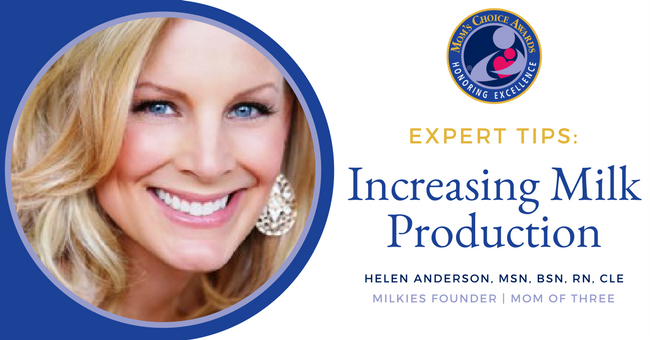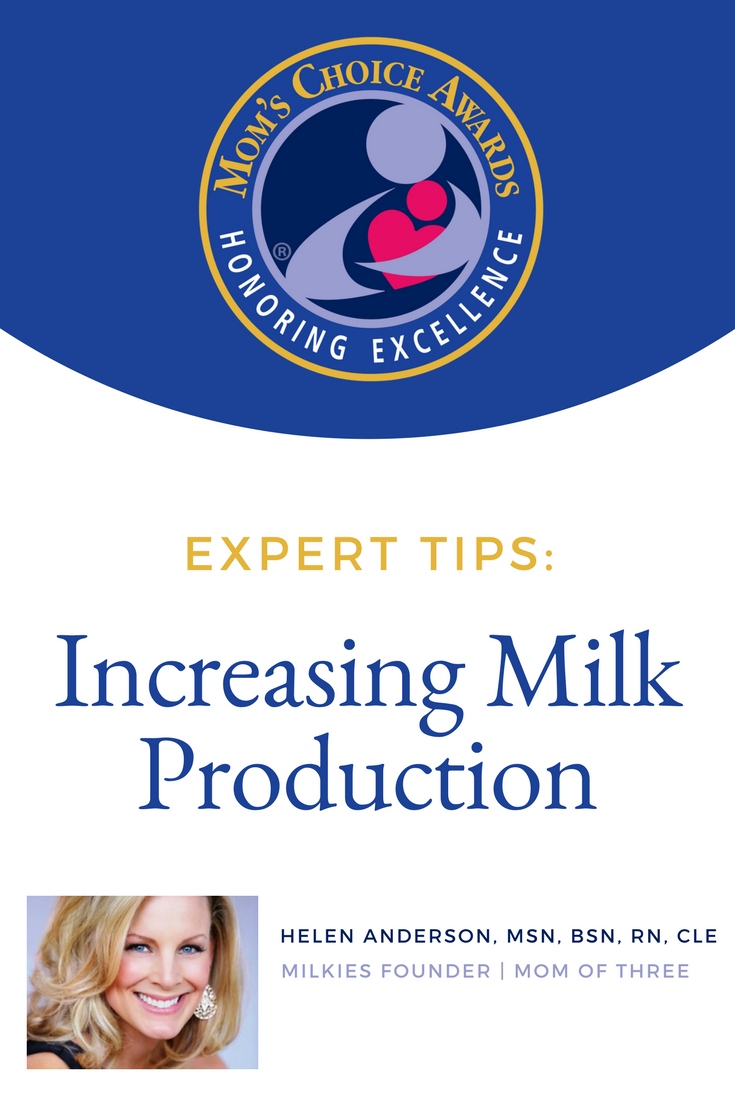 Helen Anderson, MSN, BSN, RN, CLE
Helen Anderson, MSN, BSN, RN, CLE
Founder of Milkies | Mom of Three
Worrying about your milk supply is common and many moms deal with low milk supply at some point in their breastfeeding journey. It is normal to feel short on milk when your baby is going through a growth spurt or adjusting to a new schedule (think going back to work or teething). Try not to get discouraged and be prepared to add a few new skills to your pumping and nursing routine. There are many things you can do to boost your milk production, adding a little extra effort can have a significant positive impact on your milk supply.
Worried about your milk supply? Begin with examining your lifestyle and current nursing/pumping routine.
- The most common reason for low milk supply is not nursing or not pumping often enough or long enough to empty the breasts. When breasts stay full or are not emptied well, your body gets the signal to make less milk.
- A low quality pump or short pumping sessions can leave too much milk in the breasts, causing a drop in production.
- Pain can inhibit your let-down. Be sure your pump parts are the correct size and don’t turn the suction up too high. Use a nipple balm to sooth and heal sore nipples.
- An olive oil based balm like Milkies Nipple Nurture can be applied before pumping if friction is causing discomfort.
- Dehydration, fatigue, and stress can also have a negative effect on your milk supply.
- If you are taking oral birth control pills, the estrogen in the medication can lower breast milk production. If you see a drop in milk production, switch to a non-hormonal, barrier method like condoms. Cold medicines, nicotine and alcohol can also cause your supply to decrease.
Increasing your milk supply. To increase the amount of milk you make, do these things:
- Don’t offer a pacifier, put your baby to breast if fussy
- Breastfeed or pump 8-12 times in every 24 hour period
- Eat nutritious meals and increase your water intake
- Try to reduce your stress, ask family and friends for help. Be specific about how they can help. For example – ask a friend to wash, fold and put away some laundry or pick up items on your grocery list.
- Offer both breasts at each feeding and allow your baby to nurse until he or she shows disinterest. Change positions and holds to empty each breast more completely.
- Use a double electric pump. Talk to your insurance company or WIC clinic to find pumps available to you at no cost.
- Spend as much time as possible skin-to-skin with your baby. Your baby should be wearing only a diaper and against your bare chest.
- Add a breastfeeding supplement to your daily routine, Milkies Nursing Blend combines nutritional support with milk boosting herbs like fenugreek.
- Empty your breasts often and completely. The best way to do completely empty your breasts is with breast compression and hands-on-pumping. These related techniques can increase your milk production up to 50%.
- If your baby is sleeping more than 4 hours, wake him or pump.
- Take a day or two to stay home to pump and nurse. Focusing on your body and baby will stimulate your milk producing hormones
How to use breast compression while nursing.
Use breast compression when your baby is at the breast. Latch your baby, using one arm or a breastfeeding pillow so you have one free hand. Encircle your breast with thumb on one side and remaining fingers on the other and squeeze when your baby is nibbling but not drinking. Stop squeezing and rest your hand when baby swallows. Breast compression helps your baby gets to the fatty hind milk, stay awake at the breast and reduces sore nipples, mastitis and plugged ducts. It’s a simple technique, watch a video here.
Use hands-on-pumping to maximize the volume of milk you pump.
Start pumping with a double electric pump and hands-free pumping bra, use both hands to place steady pressure on the milk ducts at the base of the breast, up from your nipple. Full milk ducts feel hard, continue to pump and message for 2 minutes after you cannot feel any more hard spots, and milk has stopped dripping as you pump. Watch a wonderful video of hands-on-pumping here.
Always keep the number of a lactation consultant nearby or call your hospital or WIC office for help if you think your milk supply is decreasing. Find a breastfeeding support group or LeLeche League meeting in your area for more social support at breastfeeding.
Nurse, Lactation Educator, Mom and inventor, Helen Anderson, has devoted much of her life to helping women reach their breastfeeding goals. She conceived the idea of the award-winning Milkies Milk-Saver after the birth of her son Henry. As an RN in a busy emergency room, Helen didn’t have much time to pump but needed to store enough breast milk to cover her 12-hour shifts. She couldn’t help but notice that every time she nursed, much of her precious milk leaked – soaking her pads, shirt, and even her baby! Recognizing this as a common problem for all breastfeeding women, Helen developed the Milk-Saver to safely and conveniently collect any milk leaked during the nursing session.
The product was an instant success and she soon joined with parent company, Fairhaven Health, to develop a number of other helpful products to support breastfeeding women. Milkies has since added many new products and team members but maintains the original goal of helping moms meet their breastfeeding goals with real, practical solutions to the everyday challenges of breastfeeding, milk collection and storage. Every Milkies product is tested by real moms and must meet strict criteria for value, quality and durability. Helen and her team of parents work together to rethink the barriers mothers face and their innovative solutions rival any of the large corporations in the lactation products market.
Helen and her team understand that problem-solving products are only part of the support breastfeeding moms need. That’s why Helen shares the latest research about breastfeeding and milk production on her blog and with moms via Facebook on Belly to Breast and now with the BF Live show The Boob Tube. In addition to product development and raising 3 busy children, Helen recently earned her Master’s in Nursing Education to prepare to be the most effective educator and advocate for breastfeeding families. She is committed to providing lactation education for every family through her many published articles, speaking engagements and work with organizations such as WIC and local health departments.









9 Comments on “Expert Tips: Increasing Milk Production | Milkies Founder, Helen Anderson”
I breastfed both of my girls, and these tips are so true! I found I had a lot more breastmilk when I fed more often. The breastmilk supplement sounds really awesome too! My sis in law is currently breastfeeding, I will share these tips!
Thanks for sharing and we are glad you enjoyed!
I’ve used fenugreek and it helped increasing my supply but it caused severe gas issues in my baby, so I had to stop it and started drinking Healthy nursing tea which not only doubled my milk production but also settled his tummy troubles.
Thank you for the tips! Great advice!
Thank you so much for this post! The advice on how to increase your milk supply is perfect!
Thank you for reading!
Glad you enjoyed!
Thanks what a wonderful read for Mom’s having challenges breastfeeding !
We are glad you enjoyed and found it useful!